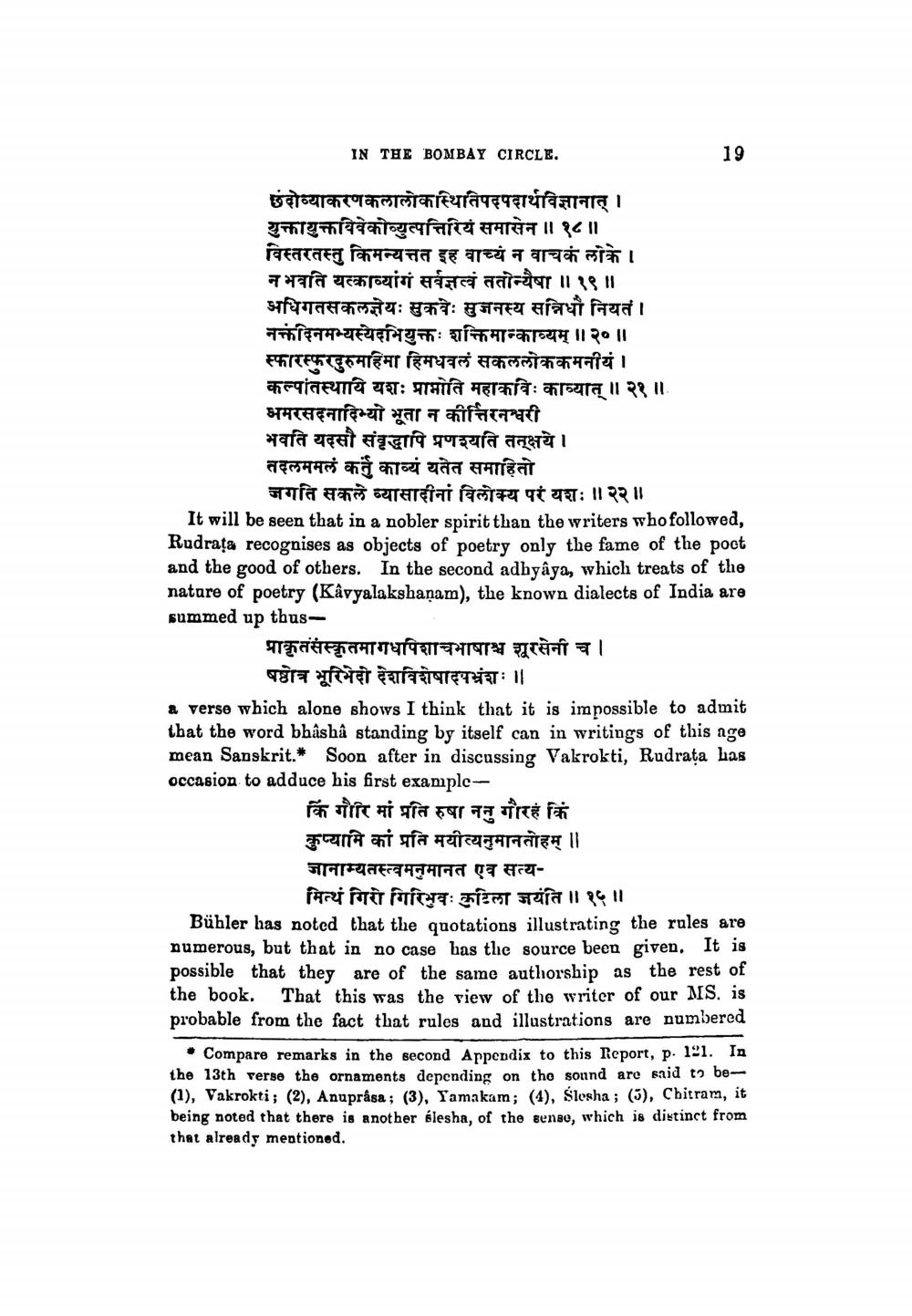________________
IN THE BOMBAY CIRCLE.
19
छंदोव्याकरणकलालोकस्थितिपदपदार्थविज्ञानात् । युक्तायुक्तविवेकोव्युत्पत्तिरिय समासेन ।। १८ ॥ विस्तरतस्तु किमन्यत्तत इह वाच्यं न वाचकं लोके । न भवति यत्काव्यांगं सर्वज्ञत्वं ततोन्यैषा ।। १९॥
अधिगतसकलज्ञेयः सुकवेः सुजनस्य सन्निधौ नियतं । नदिनमभ्यस्येदभियुक्तः शक्तिमान्काव्यम् ।।२०।। स्फारस्फरदुरुमाहिमा हिमधवलं सकललोककमनीयं । कल्पांतस्थायि यशः प्रामोति महाकविः काव्यात् ।। २१ ॥ अमरसदनादिभ्यो भूता न कीतिरनश्वरी भवति यदसी संवृद्धापि प्रणश्यति तत्क्षये। तदलममलं कर्तुं काव्यं यतेत समाहितो
जगति सकले व्यासादीनां विलोक्य परं यशः ॥२२॥ It will be seen that in a nobler spirit than the writers who followed, Rudraţa recognises as objects of poetry only the fame of the poct and the good of others. In the second adhyâya, which treats of the natare of poetry (Kavyalakshanam), the known dialects of India are summed up thus
प्राकृतंसंस्कृतमागधपिशाचभाषाश्च शूरसेनी च ।
षष्ठोत्र भूरिभेदी देशविशेषादपभ्रंशः॥ a verse which alone shows I think that it is impossible to admit that the word bhasha standing by itself can in writings of this age mean Sanskrit.* Soon after in discussing Vakrokti, Rudrata Las occasion to adduce his first example
किं गौरि मां प्रति रुषा ननु गौरह किं कुप्यामि कां प्रति मयीत्यनुमानतोहम् ।। जानाम्यतस्त्वमनुमानत एव सत्य
मित्थं गिरी गिरिभुवः कुटिला जयंति ॥ १५॥ Bühler has noted that the quotations illustrating the rules are numerous, but that in no case has the source been given. It is possible that they are of the same authorship as the rest of the book. That this was the view of the writer of our MS. is probable from the fact that rules and illustrations are numbered
. Compare remarks in the second Appendix to this Report, p. 121. In the 13th verse the ornaments depending on tho sound are said to be (1), Vakrokti; (2), Anuprasa; (3), Tamakam; (4), Slesha; (5), Chitram, it being noted that there is another élesha, of the senso, which is distinct from that already mentioned.




